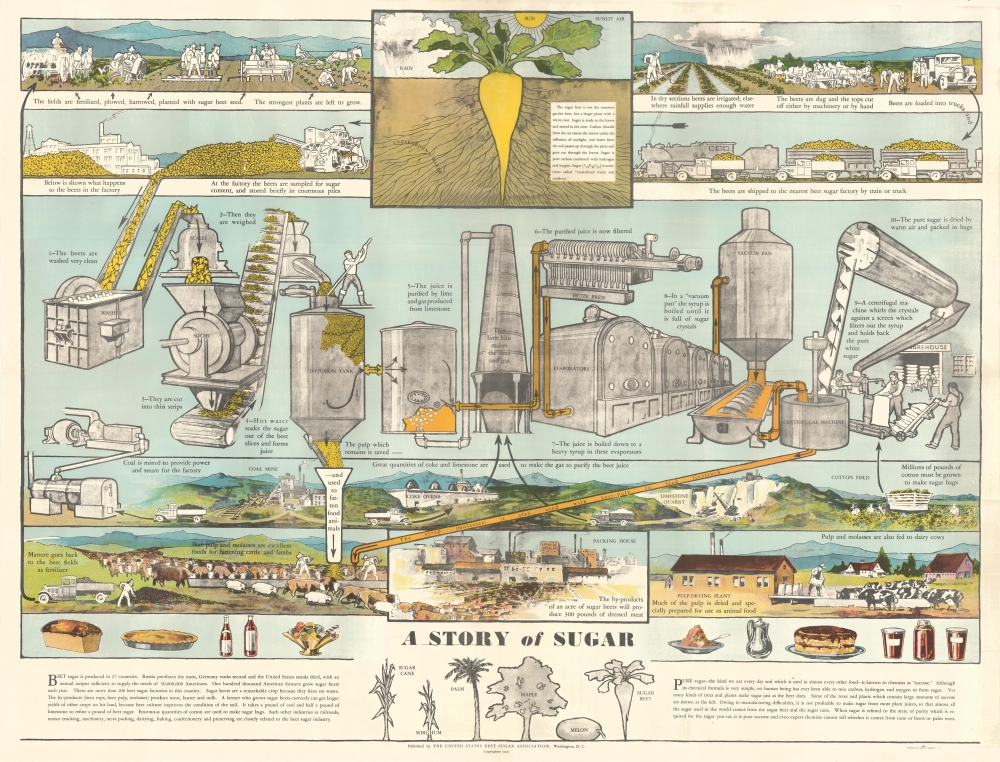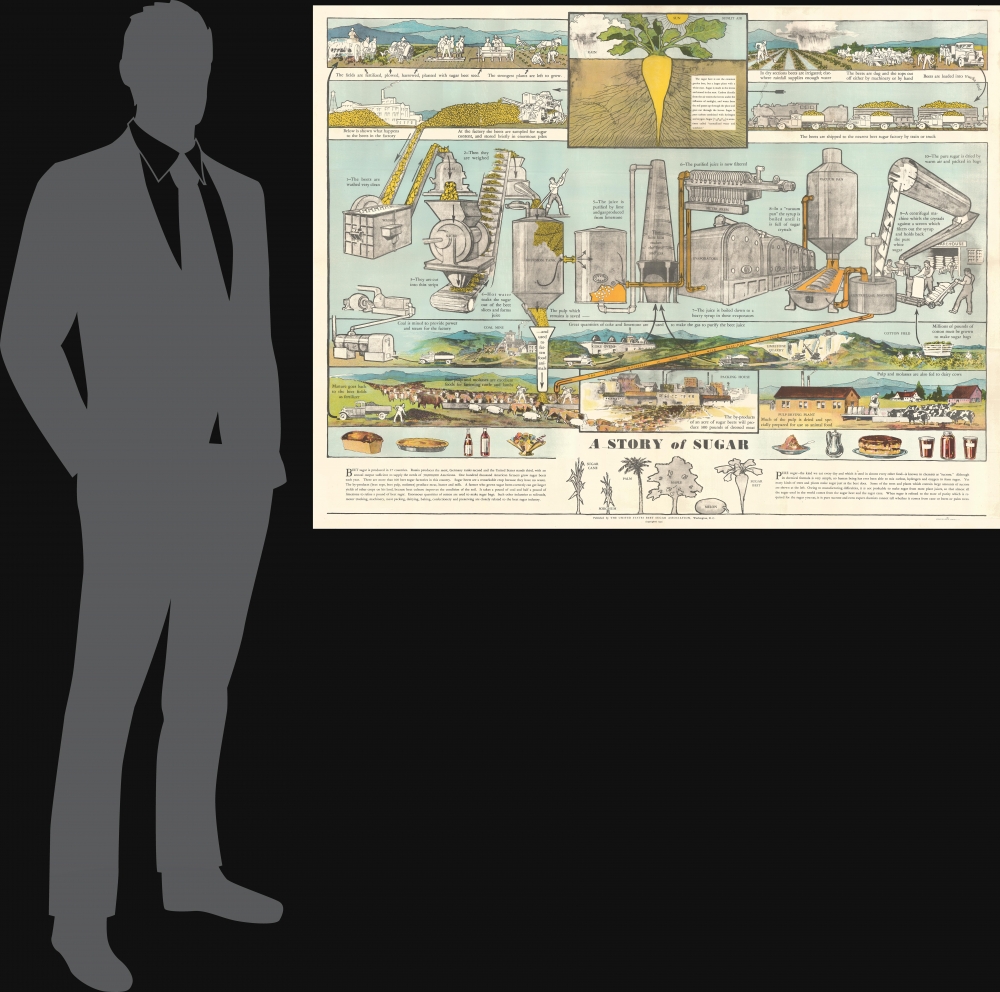This item has been sold, but you can get on the Waitlist to be notified if another example becomes available, or purchase a digital scan.
1932 Beet Sugar Association Diagram of Sugar Production
Sugar-beetsugarassc-1932
Title
1932 (dated) 37 x 48.5 in (93.98 x 123.19 cm)
Description
A Closer Look
From top to bottom, illustrations and text follow the beet sugar production process from start to finish. In brief, after being washed and cut, the beets are boiled to extract pure beet juice, which is then boiled again to produce a syrup that is run through a centrifugal machine to separate pure sugar crystals from the syrup. Aside from this direct representation of sugar production, the infographic also emphasizes other inputs of the process (coal, coke, lime, cotton) as well as the use of byproducts as feed for cattle and other livestock. Text at the bottom provides more general explanation about the industry and its prevalence in the United States.The title of this infographic suggests it was published in relation or, more likely, in reaction to a booklet entitled The Story of Sugar, produced by the National Sugar Refining Company in conjunction with the Century of Progress International Exposition in Chicago in 1933. The U.S. Beet Sugar Association likely aimed to reinforce that beet sugar was domestically produced, whereas cane sugar relied on plantations in the Caribbean, where exploited workers frequently organized disruptions in production in the 1920s and 1930s.
Beet Sugar
As explained here, sugar beets are quite different from the purple or gold roundish beets with which consumers are more familiar. Aside from sugar cane, sugar beets are generally the other main source of sucrose (table sugar) in the United States and many other countries, with other crops shown at bottom here contributing a smaller portion of sugar production. Chemically, sugar made from either sugarcane or sugar beets is identical, but it is processed differently, leading some chefs and consumers to prefer one over the other.Publication History and Census
This poster was published by the National Capital Press for the United States Beet Sugar Association in 1932. It is not recorded in the holdings of any institution in the OCLC and is scarce to the market.Cartographer
National Capital Press (c. 1911 - 1977) was a publisher based in Washington, D.C., which, as its name and location suggest, focused on works relating to public administration, infrastructure, housing, education, and other matters relevant to government. Some of its publications were made at the behest of the government or for the government itself, such as printings of Congressional Records. In 1931, the company opened a large art deco warehouse at 301 N. St. NE, which allowed it to become among the most prolific printers operating in the nation's capital. The building still stands and was recently renovated to accommodate housing units. More by this mapmaker...




